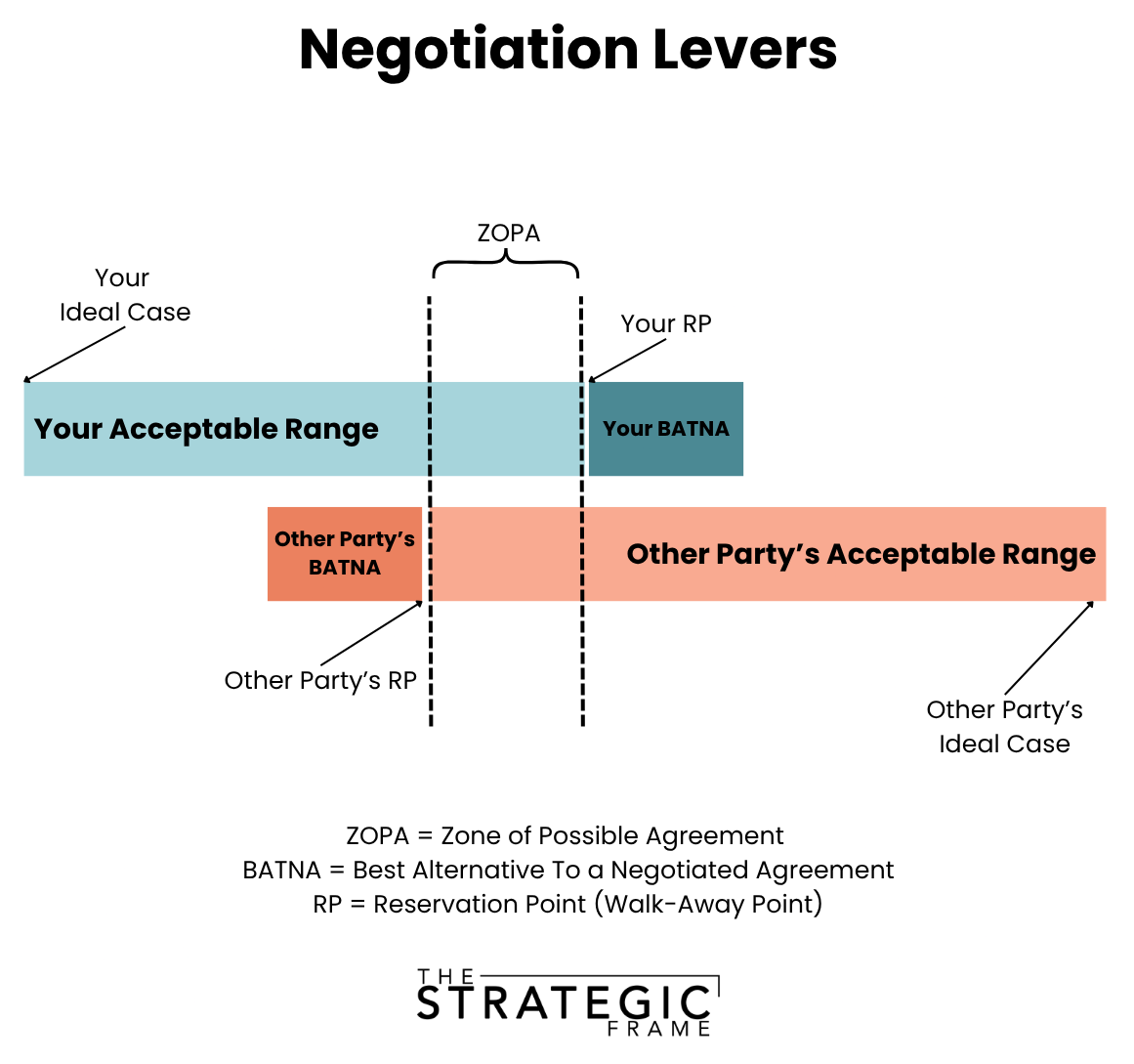ZOPA in Negotiations
What’s the Zone of Possible Agreement?
EXECUTIVE SUMMARY:
The ZOPA, or Zone of Possible Agreement, is the range where both parties’ acceptable terms overlap and a deal can actually be made. While your BATNA defines your best alternative if talks fail, the ZOPA defines whether an agreement is even possible in the first place. Understanding and actively managing this zone helps you focus on realistic deals, uncover hidden overlap, and expand the range of mutual benefit rather than chasing outcomes that cannot exist.
Over the past few weeks, we have discussed Integrative Negotiations, The Shadow Negotiation, and BATNA. Together, these concepts begin to form the foundation of effective negotiating, but there’s a critical piece missing.
Your BATNA (Best Alternative To a Negotiated Agreement) defines your best alternative if the deal falls through. The ZOPA (Zone of Possible Agreement) defines whether a deal is even possible. Without understanding your ZOPA, you might chase an agreement that cannot exist or leave value on the table by settling too soon.
What is ZOPA?
In a distributive negotiation, the Zone of Possible Agreement is the range in which both parties’ acceptable terms overlap.
Say you’re trying to sell something. If your minimum acceptable price is lower than the other side’s maximum willingness to pay, there is a ZOPA. If not, no deal will work unless someone changes their expectations or alternatives.
Think of it as the sweet spot where both parties can walk away satisfied.
For example, if you are selling a used car and the lowest price you will accept is $10,000, while the buyer is willing to pay up to $12,000, the ZOPA is between $10,000 and $12,000. A deal can exist anywhere within that range. But if the buyer’s limit is $9,000, there is no overlap and no deal possible unless one side adjusts.
How to Use the ZOPA in Practice
Understanding the ZOPA is valuable, but knowing how to apply it is what turns theory into leverage. Here are ways to find, influence, and expand the zone.
Estimate both sides’ ranges.
Start by defining your reservation point, which is the least favorable deal you would still accept. Then, research or infer the other side’s reservation point based on market data, prior behavior, or subtle cues during conversation. The overlap between the two creates the ZOPA.Test assumptions through dialogue.
Ask open-ended questions that reveal constraints, priorities, or non-monetary tradeoffs. For example, ask, “What would make this deal feel fair for your team?” or “Which part of this scope is most flexible?” These insights help you confirm where the zone might lie.Adjust the ZOPA by expanding variables.
If there is no overlap, look beyond price. Introduce other negotiable factors such as delivery terms, payment schedules, contract length, scope, or additional services. Leverage concepts from Integrative Negotiations where possible. Broadening the conversation can transform a narrow or nonexistent ZOPA into a workable one.Strengthen your BATNA to shift the ZOPA.
When your alternatives improve, your minimum acceptable point moves upward, which often shifts the entire bargaining zone in your favor. The other party must then adjust if they want to stay within range.Recognize when no ZOPA exists.
Sometimes there is simply no overlap. In those cases, forcing a deal only leads to regret. The best move is to pause, redefine terms, or walk away with clarity rather than compromise.
Wrapping It All Up
Negotiation is not about pushing until someone gives in. It is about discovering whether a deal exists that serves both sides. The ZOPA helps you find that space. When you know your own limits, understand the other party’s, and explore creative ways to expand the overlap, you shift from guessing to negotiating with purpose.
What range defines the ZOPA in your next negotiation? And if there is no overlap today, what can you do to create one?
This email is sponsored by Northern Electric
Northern Electric is Utah’s trusted electrical contractor — delivering high-quality residential and commercial work with precision, reliability, and local expertise. Learn more at https://northernelectriccompany.com/.



